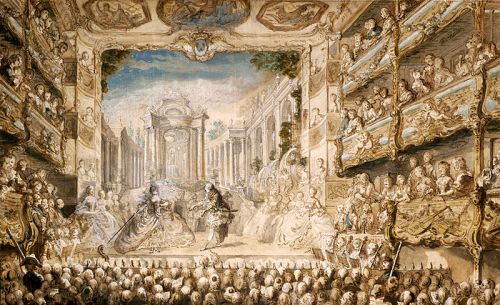
Throughout his career in Paris (1658–73), Molière regularly incorporated music and dance into his plays. Account books, bills and receipts, contracts of association, musical scores, and other documents attest to Molière’s employment of professional instrumentalists, singers, dancers, choreographers, and musical directors at the Grande Salle du Petit Bourbon and the Théâtre du Palais Royal.
In 1671, in response to the success of Pierre Perrin’s Académie Royale des Opéras, the Troupe du Roy embarked on a new direction in music theater. The troupe’s renovation of the Palais Royal and their installation of a state-of-the-art transformation stage indicate an increased commitment to large-scale performances involving music, dance, and spectacle. This gives credence to the hypothesis that, before their split, Molière and Lully planned to acquire Perrin’s privilège and move into opera.
This according to “Musical practices in the theater of Molière” by John S. Powell (Revue de musicology LXXXII/1 [1996] 5–37).
Today is Molière’s 400th birthday! Below, Ensemble Tempus Fugit performs an excerpt from Le bourgeois gentilhomme, one of Molière’s collaborations with Lully.
Related article: Comedy versus opera




